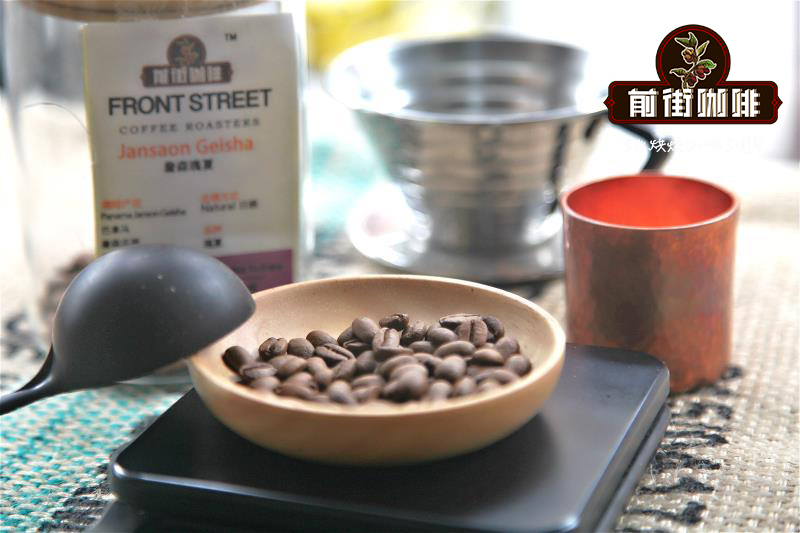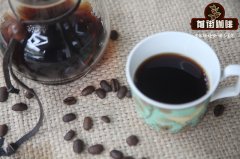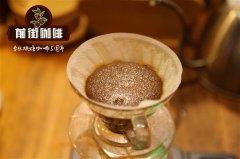What are the flavor characteristics of washed coffee beans? The difference between coffee washing method and semi-washing method

Professional coffee knowledge exchange More coffee bean information Please pay attention to coffee workshop (Weixin Official Accounts cafe_style)
Water Wash increases fruit acid sprite
Water washing is currently the most popular treatment method, almost all of Central and South America except Brazil. The color of washed beans is blue and green beautiful, the appearance of beans is neat and sells well, and the coffee quality is the highest. Generally speaking, the acid flavor and bright feeling of washed beans are better, the flavor is clean and free of impurities, which is the most customary treatment method for fine beans, but the cost is not small. On average, washing 1 kg of coffee fruit requires 2-10 liters of clean water, while 1 kg of fruit can only extract 200 grams of coffee beans. Water-scarce areas cannot afford such water-intensive harvesting.
The washing method is the most technical of all bean extraction methods. After multiple screening procedures, the quality of coffee is ensured. The poor-quality floating beans are sifted out of large tanks, and then the red fruits and fast-ripening green fruits that sink to the bottom of the tank are transferred to large or medium-sized pulping machines. It is designed so delicately that mechanical force presses the fruit against a sieve hole of the right size to let the pods (i.e. coffee beans in the sheepskin) pass through while sifting out the pulp outside the pods-taking advantage of the fact that unripe fruit is harder and the pods are harder to squeeze out, while ripe fruit is softer and the pods are easier to squeeze into the sieve holes, to keep out the unripe beans and sift out the sweetest pods. Therefore, the setting of machine thrust is very important. Too much force will squeeze out the hard and unripe beans, which will damage the quality of fine beans. Generally, the pushing force is set to allow 3% of the red fruit pods to be squeezed into the sieve hole to ensure that all the hard green fruits are removed, that is, it is better to set the pushing force smaller and lose a small part of the red fruit, so as not to spoil the whole pot.
After removing the sticky pods of the red fruits, they are transferred to large tanks, followed by the most important washing and fermentation treatment, which removes the pectin layer from the pods. This transparent goo is not easy to wash away with water. It needs to be hydrolyzed by various bacteria in the tank to decompose pectin into pectic acid, and then continuously stir and rub and wash the pods in the tank to accelerate the pectin separation from the pods. The fermentation process takes about 16 to 36 hours, depending on temperature and humidity, during which time malic acid, citric acid, acetic acid, lactic acid and propionic acid are naturally produced in the tank. Interestingly, raw beans themselves contain almost no acetic acid, but the fermentation process of washing can increase the acetic acid concentration of beans, which is beneficial to coffee flavor. These acids not only inhibit mold growth, but also some of the acid spirit will seep into the beans (this is why washed beans have a stronger acid taste), so that samples must be taken at any time to check whether the sticky pectin on the pods has been removed, and then decide whether to stop fermentation and remove clean pods. After 36 to 72 hours, the beans may overferment, producing too much fatty acid and butyric acid to produce a foul smell, and too much acid will make the coffee too sour and become a bad bean.
Water washing is a constantly changing treatment method, often new technology appears, is the most reliable method of taking beans for fine beans. Generally speaking, washed beans have the purest flavor, the lowest miscellaneous flavor, the best fruity and fruit acid flavor, and the best bean phase, but the sweetness is not as good as the sun beans. Even the notoriously thick beans are washed with water to obtain beans, which can also enhance the elegant flavor and value. It is the most widely used treatment method at present.
Mechanical half wash vs. Brazilian half sun
Because water resources are not rich enough to wash, but want to improve the quality of sun-dried beans, so semi-washing and semi-sun method came into being. These treatments can be divided into Brazilian Pulped Natural (also known as semi-sun) and Mechanical Semiwash. Among them, mechanical semi-washing method is widely used, such as Colombia, Costa Rica, El Salvador, Vietnam, Indonesia, Laos, Myanmar and several African countries. On average, it only needs half a liter of clean water to treat 1 kg of coffee fruit, which is much more economical than washing method.
Brazilian semi-sun: natural pectin removal
Brazil used to use the sun method in the past, and the quality difference was large, making Brazilian beans synonymous with medium and low quality. However, in order to improve the quality and change its image, the world's largest coffee producer carried out a coffee quality revolution in the 1990s, vigorously promoting the unique semi-sun method in the world.
Brazil's vast coffee fields are mostly harvested mechanically for economic reasons. When 75% of the coffee fruit in the coffee garden turns red, the mechanical harvesting begins, followed by the same pre-operation as the washing method, that is, moving into a large tank to remove floating beans, sifting out sunken beans, and then using a large pulp sifter to remove the pulp and remove the pods covered with pectin. The next stage is different from the washing method: instead of moving the sticky pods to a tank for fermentation, they are moved to an outdoor drying field. Due to the dry climate in Brazil, the sticky pectin on the pods will harden in about a day. Then use a lot of manpower to turn up and down, let the pod evenly dry inside and outside, so as not to regain moisture and stink, about two to three days, with the help of sunlight and the natural force of dry climate, the pod can reach a certain degree of dehydration. After further drying in a dryer, the water content is reduced to 10.5~12%, and then the pods are stored in special containers for about ten days for further ripening to stabilize the quality. Before export, grind off the sheepskin layer (i.e. pod), remove the coffee beans, and package them in grades.
The biggest difference between brazilian semi-solarization and the ancient solarization method is that the pods are removed first, leaving them in the flesh to ferment imperceptibly, but manually controlling the drying of the pods to minimize runaway variables. This is a big improvement in quality control. The biggest advantage of this method is that the pectin sugar on the pod can penetrate into the beans, which has the sweet feeling and mellow degree of high-quality sun-dried beans, but reduces the disadvantages of sun-dried beans that are easily infected by mold and excessive fermentation. However, the fruit acid flavor of semi-sun-dried beans is lower than that of washed beans, because it is impossible to derive additional acid flavor components such as acetic acid unique to washed beans. This is also the reason why Brazil beans are significantly lower in sourness. Brazil's dry climate is a prerequisite for semi-sun, and few producing countries have Brazil's superior semi-sun environment. If used in wet Guatemala with semi-sun, pods will certainly die.
In recent years, many small and medium-sized farms in Brazil that specialize in fine coffee have abandoned mechanical harvesting, and all fruit is picked manually, only red fruit is picked, and it is sent to the processing plant for semi-sun processing within a few hours. Interestingly, Brazil's "extraordinary cup" national treasure bean bidding event, the top 20 almost all use semi-sun treatment method. It is obvious that the natural pectin removal method implemented by Brazilian authorities for nearly two decades has achieved great results. High quality Brazil beans are sweet, low sour, and have a strong nutty or kernel aroma, shaping Brazil's unique "regional flavor", a wash Brazil beans lack of fragrance can be old stigma.
Mechanical semi-washing: economical
Not all regions can use Brazilian semi-solarization. If you take out the pods stained with pectin layer from the production area with heavy humidity and then take them outdoors, they are not only difficult to dry and dry, but also easy to breed mold. Therefore, mechanical semi-washing method has been developed in areas with high humidity, which saves both trouble and water. In recent years, this method has been used in many countries, including areas with high humidity in Central and South America and areas with water shortage or immature washing technology such as Indonesia, Myanmar and Laos in Asia.
First, the red fruit is poured into the pulp remover. Remove the pods covered with pectin. Instead of drying them in the sun or pouring them into the tank for fermentation, they are poured directly into the pectin scraper (Demucilager) next to them. Only a small amount of water is needed to mechanically scrape off the sticky pectin layer, remove the smooth-surfaced pods, and then expose them to the outside until the moisture content drops to 12%. The semi-washing method has few variables affecting quality, and only needs to invest in pulp peeling machine and pectin scraping machine to operate independently in the estate. Coffee treated with this method has a lower fruit acid taste than washed beans, but a little higher acid than sunlight; a lower sweetness than semi-sunlight, but a little cleaner than semi-sunlight, and a flavor between semi-sunlight and washing.
Qianjie Coffee: Guangzhou's baking shop, small store but a variety of beans, can find a variety of famous beans, but also provide online store services. https://shop104210103.taobao.com
Important Notice :
前街咖啡 FrontStreet Coffee has moved to new addredd:
FrontStreet Coffee Address: 315,Donghua East Road,GuangZhou
Tel:020 38364473
- Prev

Introduction to the characteristics of washed coffee beans what are the characteristics of the taste and flavor of washed sunny coffee beans?
Professional coffee knowledge exchange more coffee bean information Please pay attention to the coffee workshop (Wechat official account cafe_style) Coffee treatment: washing coffee beans compared with the sun method introduced last week, the water-washed coffee treatment method has more artificial traces and the process is much more tedious, no wonder another English name for tanning method is natural process. Master of washing method
- Next

Water-washed coffee beans are cleaner? How to drink water-washed coffee do you need to grind the coffee beans?
Professional coffee knowledge exchange more coffee bean information Please pay attention to the coffee workshop (Wechat official account cafe_style) washing method WASHED put the harvested coffee cherries into the pulp separator, separate the pods from the pulp, and then put the pods into a clean tank for fermentation (honey treatment, do not go through this step) remove the pectin from the top layer of the pods and dry them in the sun. A place like this
Related
- What is the meaning of lactic acid fermentation with coffee bean treatment?
- How to judge the state of foam by sound?
- How does the latte pull out the unicorn pattern? Come to get for a little trick to improve the flower pull!
- Will flower pulling affect the taste of the latte?
- Do you know the history of coffee?
- The difference between honey treatment and sun washing what is raisin honey treatment?
- What kind of milk can a novice use to make coffee foam to keep the foam longer? The correct method and skills of milking tutorial sharing
- Why do washed coffee beans taste sour? Flavor characteristics of washed Coffee
- Introduction to the skill of how to practice the size and height of water injection around the circle of hand-brewed coffee
- How do beginners practice coffee flower drawing from scratch?

